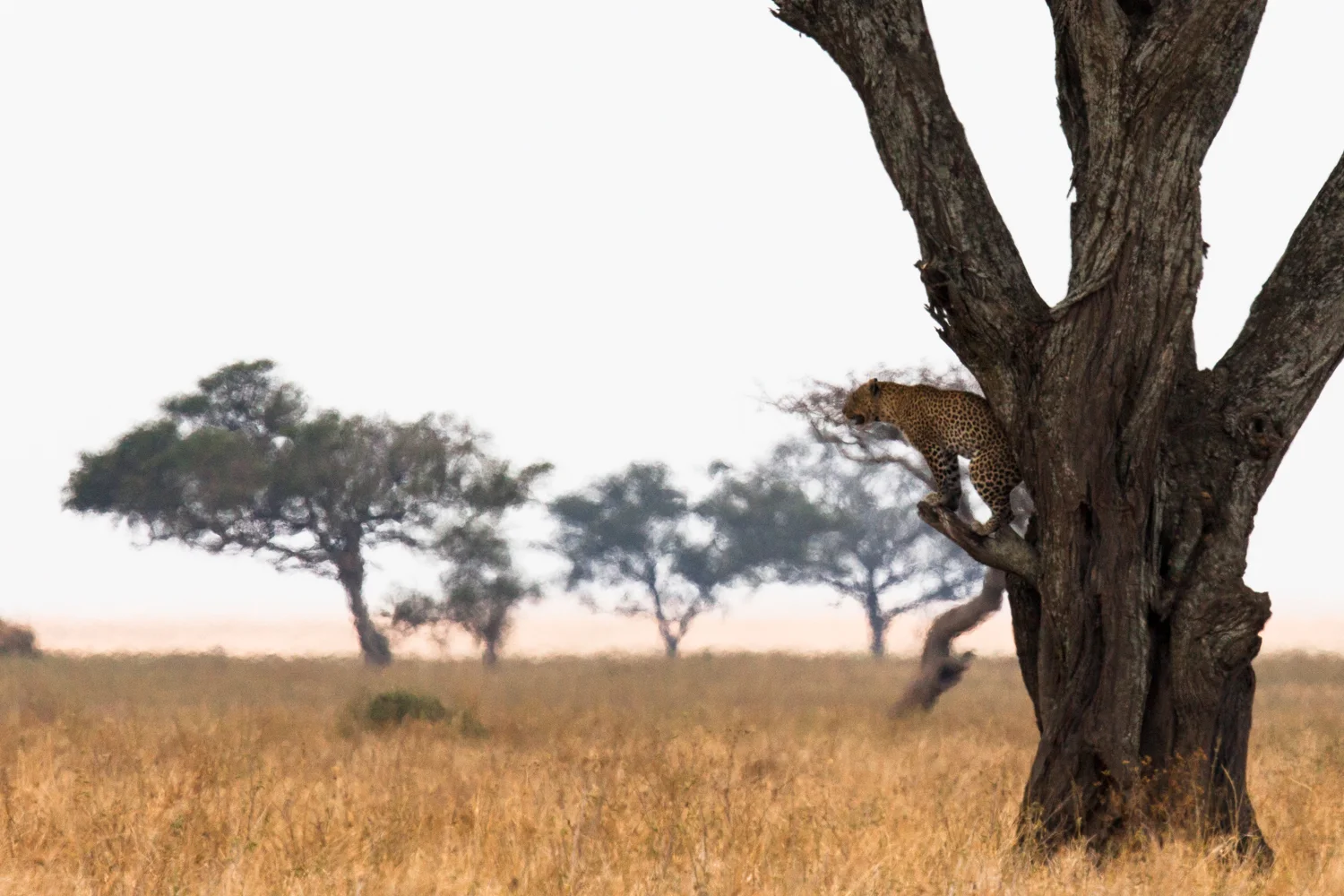Tanzania Safari
August/SEPTEMBER, 2013
Olduvai Camp & the Central Serengeti
Olduvai Camp was our next stop on the safari, and unfortunately, a camp that we only booked for one night. I say unfortunate because the topography alone was worth spending more time around. Especially the kopji that the camp was built on and around.
On top of this, the camp is located close to Olduvai Gorge, perhaps the single most important paleoanthropological site in the world, and one that was made famous by the ground breaking work done there by Louis and Mary Leakey.
We were supposed to get to the camp early in the afternoon so we could take part in a tour of the area, but because the northern road out of Ngorongoro Crater was closed for repairs, our guide had to drive out of the crater using the road we came in on. This meant we then had to drive all around the rim of the crater to get back to the north side where the road carried on to Olduvai and the central Serengeti. This took several hours off our time at Olduvai, which meant we didn’t get to see the gorge, or anything else for that matter.
The kopji (rock outcropping) that is the heart of Olduvai Camp.
Inside Olduvai Camp
Serengeti National Park - Central Serengeti
The final stage of the driving portion of our safari was the vast plain that is the central Serengeti.
Our journey would take us north to the central Serengeti airstrip of Seronera, where we would board our bush plane for the flight to the Serengeti Mara region in the far north of Tanzania.
The drive was only 88 kilometres, but it would take us a good five hours to complete it. Partly because of the horrendous corregations on the dirt “highway”, but also because we would be searching for game along the way. A goal that was harder to accomplish compared with the previous areas we had visited.
Hard Times In The Central Serengeti
Since late August was the end of the dry season, and the giant herds of wildebeest and zebra had migrated north to find greener pastures, very little game remained in this arid landscape. That fact was particularly hard on the predators who, because of territorial conflicts with others, weren’t able to leave their particular domain and travel with the herds. We came across a few of these hard luck cases, and their lack of food was very evident from the gaunt faces and highly visible ribs and backbones.
Not really a pride of lions, as the group consisted of just a single female, and two males. Fortunately for these three, despite sparse game for them to hunt, they had very recently brought down something big as all three of them had enormous bulging stomachs.
Our guide figured the two males were probably brothers. The female had a tracking collar which, as we understood, is the standard procedure. The female is the centre of the pride, and is the safe bet when wanting to track pride movements.
Our Limited game spotting in Central Serengeti
Seronera Airstrip and the Central Serengeti Visitors Centre
The central Serengeti visitor centre was the main rest stop in a vast area on the highway north from Ngorongoro. It consisted of a fuel stop, gift shop and picnic area where the multitude of guide vehicles and tour buses would stop. For us it was essentially a place to rest and have our bagged lunch from the previous night’s camp while the guide fuelled his vehicle for his journey back south to Arusha.
We were all pretty bagged after the rough ride for the last four days, so we didn’t move about much. Mostly we just sat and watch the various tourist, and took a few pictures of a bit of the wildlife that called the rest stop home.
Waiting for the single engine plane to come to a stop after landing.
































































